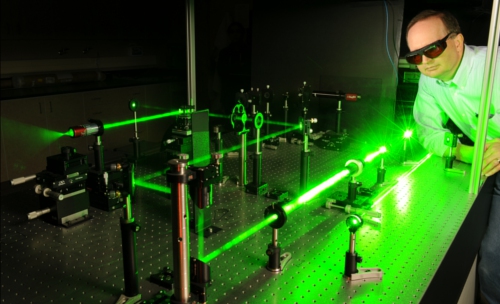

OPTICAL AND ELECTRICAL PROPERTIES INVESTIGATIONS OF SMOKY QUARTZ, BLUE CHALCEDONY AND AGATE FROM TURKEY - Abstract
In this study, the optical and electrical properties of smoky quartz in Aydın-Koçarlı region, blue chalcedony in Eskişehir-Sarıcakaya region, and agate samples in Eskişehir-İnönü region, all of which has been formed by conglomeration as a result of geological formation and ecological balance, have been analyzed. The optical, electrical and structural properties of smoky quartz, blue chalcedony and agate samples have been examined by using analysis techniques such as ICP-AES, XRD, optical absorption in VIS-NIR regions, thermoluminescence and dielectic in microwave frequency band.
In ICP-AES analyses, Fe2O3, Al2O3, CaO, MgO elements in low rates and rare soil elements such as Ni, Cr, Sr, Ba, Co in various rates have been detected as characteristic properties in samples in which there is a high rate of SiO2 elements (98.3% - 89.8% - 91.2%).
In optical absorbtion bands in VIS region, it can be suggested that element Fe and specifically Ni and Cr rare soil elements contribute to sample color formation.
In the TL analyses carried out on the samples after 900 Gray X radiation, while one TL luminescence curve each has been observed in the smoky quartz and blue chalcedony samples at 111 C and 103 C changing between 0.9-1.0 eV trap depth, in agate sample two TL luminescence curves have been observed at 144 C and 371.4 C between about 0.4 – 0.45 eV trap depth. According to these results, it can be indicated that agate sample has much more trap number or defected structure.
When the electrical properties of samples in microwave X frequency band are investigated, it has been detected that the average real dielectric values of each sample are 5.08, 4.59 and 4.74 respectively. These values coincide with dielectric values observed in typical SiO2 structure in literature review. Imaginary dielectric values named also as insulation loss is 0.77 in quartz, 0.22 in blue chalcedony and 3.84 in agate sample. 3.84 insulation loss in agate sample can be explained by ionic conduction which can be resulted from the intensity of water or hydroxyl molecules in sample composition.
Simultaneous thermal analyses (TGA/DTA) are performed to the blue chalcedony and agate samples which have between 3.84% and 4.39% water or hydroxyl according to the ICP-AES analyses. In the thermal analyses, it is observed that while the weight loss due to the water or hydroxyl loss at 1084.57 C in blue chalcedony sample is 3.07%, in agate sample at 808 C, weight loss is 37.78%.
It can be stated that in the optical absorption spectrum performed in NIR region, for 5195-5216 cm-1 shift values there exists base drift of water molecules and compositions due to the OH hydroxyl stretching, for 7017-7027 cm-1 shift values there exists free and hydrogen bonded silanol groups.
Studying the TL trap structure, electrical properties, NIR region absorption characteristic and TGA/DTA thermal behavior of the agate sample, it is observed that in its compositions defect structures due to the water or hydroxyl molecules have intensively come up. So that watery defective structure can locally be defined in more detail, firstly their spatially-resolved CL analysis has been done synchronously with micro raman spectroscopy, which is followed by their time-resolved CL analysis.
In micro-raman measurements of the agate sample, powerful quarz and moganite pigs at a shift valuation of 465 cm-1 and 501 cm-1 have been detected. Spatially-resolved cathodoluminescence measurements in room temperature have been recorded in three selected areas. While the lowest CL emission is observed in the grey area which has 100% SiO2, the high CL emission at a valuation of 643 nm that is observed in the brown area having 99.7% SiO2 and 0.3% Fe2O3 can be attributed to the high concentration of silanol group in the areas rich of moganite.
Totally, five emission bands in the white outer area which includes 98.7% SiO2 and 1.3% Al2O3 were detected in the CL spectra: UV bands at about 317 and 380 nm, sharp blue bands at about 437 and 458 nm and intense red band at 643 nm. The emission in 317 nm is related to non-bridging oxygen hole centers (NBOHC) and the one in 380 nm is related to [AlO4]/ H+ centers created by the big amount of aluminum in the lattice. The 458 nm emission is due to recombinations of self-trapped excitons, which involve irradiation-induced oxygen Frenkel pairs consisting of an oxygen vacancy and a peroxy linkage (Si – O – O – Si). The intensity for brown area-agate at 643 nm is higher than that of white outer-agate. We conclude that high intensities of the 643 nm emission as particularly observed in moganite-rich zones can probably be assigned to high concentrations of silanol groups.
When time-resolved CL data on the agate sample are collected, at least three broad emission bands were detected in: a green band of low intensity at about 496 nm, intense orange band at about 600 nm, and a red band at 670 nm. The CL emission at 670 nm shows some relationships between the hydroxyl or alkali content and the abundance of O2 (super 3-) centres and E’1 centres. Another salient aspect of the agate CL spectrum is the existence of the orange emission band centered approximately in 600 nm. The predominance of the yellow CL emission band and the high concentration of E’1 centres are typical for agates formed by acidic volcanism processes.
